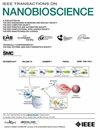Green Synthesis of Selenium Nanoparticles Using Equisetum diffusum: Characterization, Antibacterial Potential, Effects on Plant Growth
IF 4.4
4区 生物学
Q1 BIOCHEMICAL RESEARCH METHODS
引用次数: 0
Abstract
This study explores the green synthesis of selenium nanoparticles (SeNPs) using Equisetum diffusum D (ED) aqueous extract and evaluates their nanofertilizer and antibacterial potential. The synthesized SeNPs were characterized by UV-Vis spectroscopy, FTIR, XRD, SEM, EDX, DLS, TGA, and DSC, confirming their stability, spherical morphology, and high purity. The UV-Vis spectrum established a peak at 371 nm, and SEM analysis revealed an average particle size of 18.66 nm. The zeta potential measurement of −52.34 mV indicated excellent dispersion stability. The impact of SeNPs on plant growth was assessed through a five-week experiment with tomato plants. Plants treated with low and medium concentrations of SeNPs (Group 3 and 4) showed significant improvements in growth parameters, with 120.75 % and 120.03 %, respectively, compared to 101.37 % in the negative control. Leaf length and width also demonstrated notable enhancements. The antibacterial activity of SeNPs was tested against phytopathogens, Xanthomonas spp Citrus limetta and Solanum lycopersicum, along with human pathogens, Listeria monocytogenes, Staphylococcus epidermidis, Pseudomonas aeruginosa, and Escherichia coli. The SeNPs exhibited substantial inhibitory effects, with zones of inhibition measuring 26, 21, 31, 24, 36, and 24 mm, respectively. The MIC values ranged from 20 to利用弥散木贼绿色合成纳米硒:表征、抗菌潜力及对植物生长的影响。
本研究探讨了利用弥散木犀草(Equisetum diffusum, D ED)水提物绿色合成纳米硒(SeNPs)的方法,并对其纳米肥料和抗菌潜力进行了评价。通过紫外可见光谱、FTIR、XRD、SEM、EDX、DLS、TGA和DSC对合成的SeNPs进行了表征,证实了其稳定性、球形形貌和高纯度。紫外可见光谱在371 nm处建立了一个峰,扫描电镜分析显示平均粒径为18.66 nm。zeta电位测量值为-52.34 mV,具有良好的色散稳定性。通过对番茄植株进行为期五周的试验,评估了SeNPs对植物生长的影响。低、中浓度SeNPs处理组(第3组和第4组)对植株的生长参数有显著改善,分别为120.75%和120.03%,而阴性对照为101.37%。叶片的长度和宽度也有显著的增强。研究了SeNPs对植物病原菌、柑橘黄单胞菌、番茄茄、人类病原菌、单核增生李斯特菌、表皮葡萄球菌、铜绿假单胞菌和大肠杆菌的抑菌活性。SeNPs表现出明显的抑制作用,其抑制区分别为26、21、31、24、36和24 mm。MIC值为20 ~ 30 μL, MBC值为30 ~ 40 μL。这些结果表明,生物源SeNPs作为有效的纳米肥料具有提高作物生产力和抗菌作用的潜力,为农业和微生物管理应用提供了可持续和环境友好的替代方案。
本文章由计算机程序翻译,如有差异,请以英文原文为准。
求助全文
约1分钟内获得全文
求助全文
来源期刊

IEEE Transactions on NanoBioscience
工程技术-纳米科技
CiteScore
7.00
自引率
5.10%
发文量
197
审稿时长
>12 weeks
期刊介绍:
The IEEE Transactions on NanoBioscience reports on original, innovative and interdisciplinary work on all aspects of molecular systems, cellular systems, and tissues (including molecular electronics). Topics covered in the journal focus on a broad spectrum of aspects, both on foundations and on applications. Specifically, methods and techniques, experimental aspects, design and implementation, instrumentation and laboratory equipment, clinical aspects, hardware and software data acquisition and analysis and computer based modelling are covered (based on traditional or high performance computing - parallel computers or computer networks).
 求助内容:
求助内容: 应助结果提醒方式:
应助结果提醒方式:


